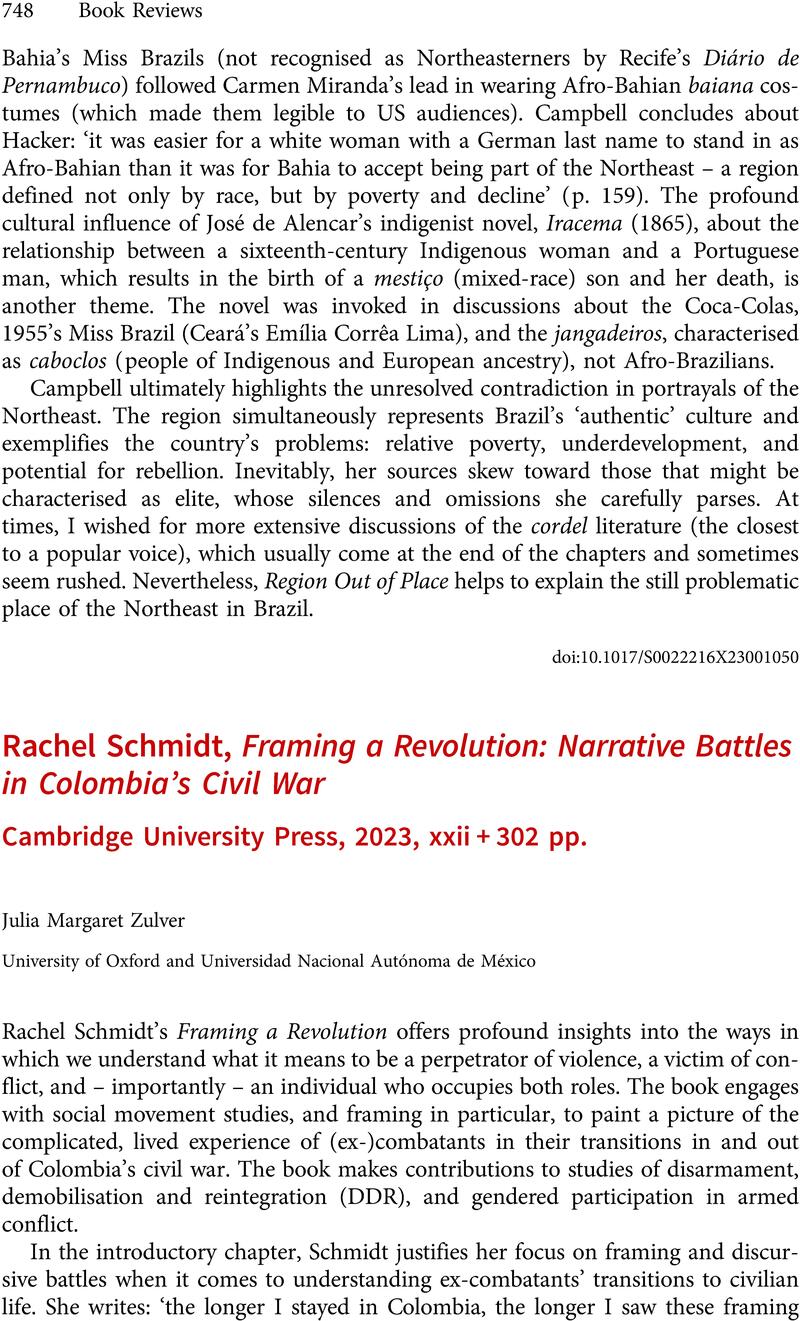No CrossRef data available.
Article contents
Rachel Schmidt, Framing a Revolution: Narrative Battles in Colombia's Civil War Cambridge University Press, 2023, xxii + 302 pp.
Review products
Rachel Schmidt, Framing a Revolution: Narrative Battles in Colombia's Civil War Cambridge University Press, 2023, xxii + 302 pp.
Published online by Cambridge University Press: 24 January 2024
Abstract
An abstract is not available for this content so a preview has been provided. Please use the Get access link above for information on how to access this content.

- Type
- Reviews
- Information
- Copyright
- Copyright © The Author(s), 2024. Published by Cambridge University Press



